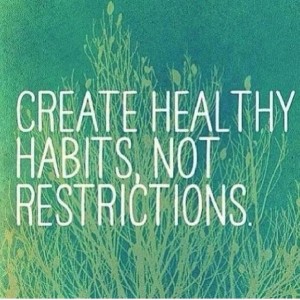6 Steps To Stay Healthy This Season
Category: Healthy Aging

As 2019 begins to wind down, it is hard to believe another year has almost passed. They say time flies! And of course we are all another year older ~ let’s face it ~ we all age. Our cells are bombarded every day by stress, poor diet, and environmental conditions. Can we really slow down that clock?
In the Nutrition Report, Eating Well, , Karen Ansel, M.S. R.D. reported that the U.S. Dept. of Health and Human Services (HHS) and the U.S. Department of Agriculture (USDA) update the Dietary Guidelines for Americans every 5 years. Last January the results were released and the information they shared includes 6 easy rules that can help us all live a longer, healthier life. They include:
Stop Eating Too much ~ Losing just 5 to 10% of your body weight can lead to better blood pressure, a decreased risk of diabetes and improved lipid levels. (According to the International Food Information Council, only 12% of Americans know how many calories they need in a day). Ansel reminds us that by taking our current weight (in pounds) x 12 you will know how many calories you need to maintain your weight. If you subtract 500 calories per day from this number, you will shed about a pound a week; trim 1,000 calories and you will lose 2 pounds a week. Anything more than that will deprive you of important nutrients. One thing that has helped in our family is by using smaller plates. Smaller plates…..smaller portions! Another suggestion ~ when you eat out, order the appetizer and salad rather than an entree.
GO For More Fruits and Vegetables ~ Eating Well Advisor Rachel Johnson recommends following the Guidelines in making literally half of the plate fruits and vegetables. Since only 1 in 4 Americans are even getting the recommended servings of these per day, this is good advice. The most nutrient-rich ones are dark green,, red and orange. I love to pile my plate with salad. Adding red peppers, grape tomatoes, carrots, dried cherries, peaches, apples or red grapes add a lot of nutrients without a lot of calories.
STOP Eating Junk ~ The top source of calories (35%) are starchy desserts (cookies, cakes, pastries). These contain artery-clogging saturated fats contributing to heart disease (now affecting 37% of Americans). Added sugars include table sugar, honey, molasses, agave and high-fructose corn syrup. Eating naturally sweet foods (fresh and dried fruit) will give you less calories, and vitamins, minerals, phytochemicals and fiber. There are also plant-based fats found in nuts, nut butters, seeds, and avocados. Did you know Americans on average take in 3,400 millgrams of sodium each day? (a third more than the recommended daily limit which is only 1 teaspoon salt) High salt intake leads to high blood pressure, diabetes and chronic kidney disease. Our family avoids processed foods (which are loaded with salt) and stick with fresh foods. Also, when we purchase canned beans, we make sure to rinse them first to get all of the salt out.
MAKE WAY for leaner meats and poultry and vegetable protein ~ The usual staples in Americans” diets include cheese, whole milk, butter, and certain cuts of meat and poultry. These make our diets 1 and one half times as much saturated fat as we should be having. Ansel cited a study done in a 2009 Journal of Nutrition with 350,000 American men and women. They were following their diets and found that the death rate was 20% lower in the 10 years of the study of those who consumed lean meat, low-fat dairy and a few added solid fats.
GO for more whole grains ~ Unfortunately we consume a lot of refined grains rather than choose brown rice, oats and 100% of whole-grain cereal, bread and pasta. (Half of Americans are eating less than half an ounce of whole grains a day). The Archives of Internal Medicine Study attributes a reduced risk of death from cardiovascular, infectious and respiratory diseases because of the fiber from whole grains and as result state that upping your whole-grains intake could lengthen your life.
GO fish ~ Fish is low in calories and packed with protein and a source of the omega-3 fats EPA and DHA (shown to improve heart health and reduce risk of dying from a heart attack according to Dariush Mozaffarian, Dr.P.H.M.D. at Harvard School of Public Health). Ansel reports that a 2009 Nutrition, Metabolism and Cardiovascular Disease study found that people who ate a 5-ounce serving of seafood 5 times a week for 8 weeks lost nearly 4 pounds more than people who ate the same number of calories but no seafood. Worried about mercury? Avoid swordfish, tilefish, king mackerel and shark and limit albacore tuna to 6 ounces a week. My husband and I love to put our wild salmon into a “light” alfredo sauce mixed with steamed broccoli, and red and yellow peppers.
An additional thing my husband and I do each day is take a liquid dietary supplement that contains the power of both resveratrol and a proprietary phytonutrient blend, clinically shown to slow aging at the cellular level by improving cell defense, increasing cell energy, promoting cell repair, and optimizing cell performance. Ask me about it.
Going back to the first rule of eating recommended, Eating Less, I have found a plan that has really helped me to satisfy my cravings and get the nutrients and protein I need without adding extra calories. Interested? Contact me for more information about a great offer that includes free shipping and a free 7 day cleanse.
Meanwhile, enjoy the holidays! Perhaps by following some of the guidelines here, you will not fall into the usual weight gain that this season often brings.



Facebook Comments